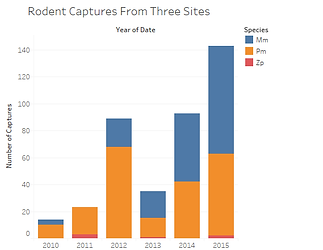Burying Beetle Research Story
Rocky Mountain Biological Laboratory (RMBL)
Welcome to the Rocky Mountain Biological Laboratory, a centre for scientific research and discovery in the mountains of Colorado. Known as "RuMBLe" to the scientists who reside here during the summer, this is where the story of the burying beetles begins...

The community of support and inspiration at RuMBLe is just as important as the science itself. Many of the researchers are not annuals, but perennials.
Would you consider a career as a field biologist? Step into the shoes of a research assistant to experience a typical day at RuMBLe.
My first visit to the Rocky Mountain Biological Laboratory was in the summer of 2015. I was enchanted by the alpine scenery and the rich history of the area, but one thing impressed me above all else: for many people, the research station is a second home. Literally, a second home...


The first heat waves of summer are a signal to pack the bags and load up the car. After a long day of driving, Dr. Smith and Dr. Williams arrive at their cabin door and step into a home of comfort and memories. This is more than just a place of research. This is a place of mountain weddings and pioneer construction. A place of stories.
Introducing...the protagonists!
Kingdom: Animalia
Phylum: Chordata
Class: Mammalia
Order: Primates
Family: Hominidae
Genus: Homo
Species: sapiens
Common Name: Dr. Rosemary Smith
Kingdom: Animalia
Phylum: Arthropoda
Class: Insecta
Order: Coleoptera
Family: Silphidae
Genus: Nicrophorus
Species: investigator, defodiens, guttula
Common Name: Burying beetle
The Data
Dr. Smith has been studying burying beetles at the Rocky Mountain Biological Laboratory since 1983. Her long-term and ongoing research efforts have explored everything from temperature regulation to carcass selection in these amazing insects. The two censuses below are a sample of this larger work. The climate data provides contextual information.
The first encounter with a new data set can be both intimidating and confusing. The videos below will provide you with a more complete picture. Dive into a Google Earth tour of the research sites, or discover how the data was collected.
Can't see the forest for the trees?
Tableau, a data visualization software, enables you to explore the data sets and discern meaningful patterns from the mass of numbers...
Download the free app at https://public.tableau.com/s/


